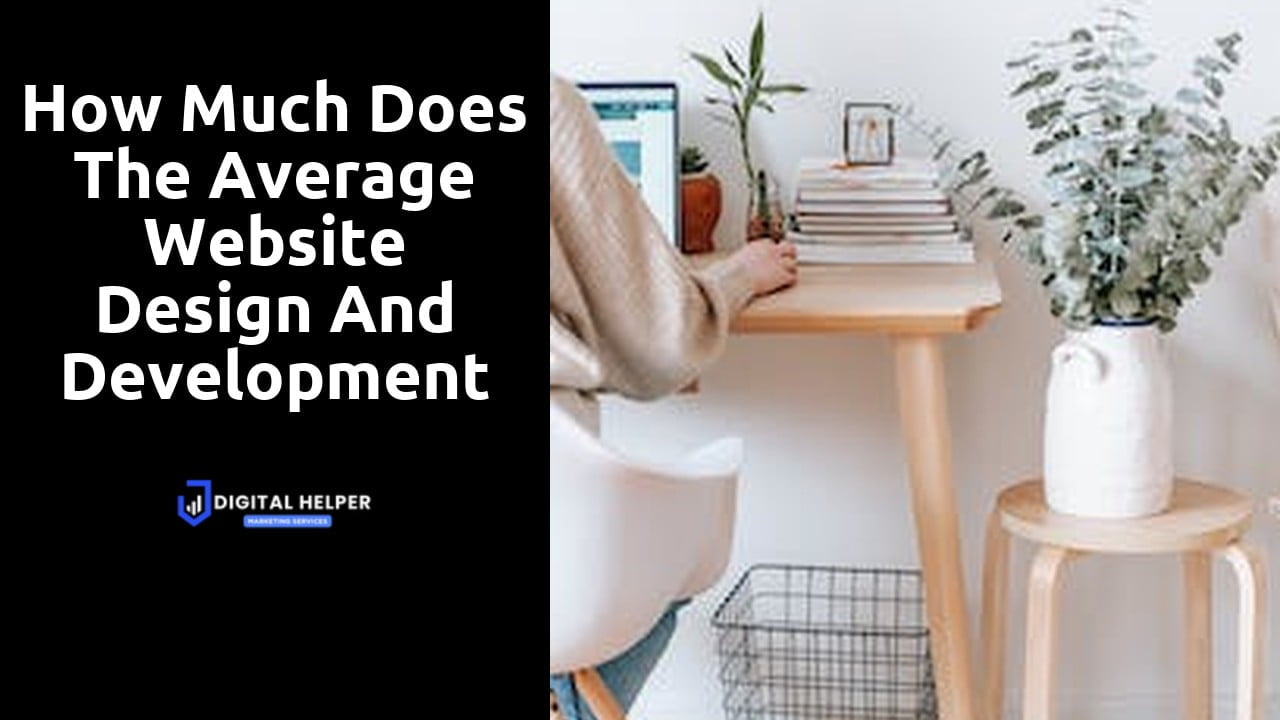How much does the average website design and development cost?
Table Of Contents
Understanding Pricing Models in Web Development
When it comes to pricing models in Website Design & Development, there are primarily two common approaches: fixed price contracts and hourly rates. Fixed price contracts involve a set agreement between the client and the developer for a specific amount to complete the project. This model is beneficial for clients who have a well-defined scope and want to ensure the project stays within a predefined budget. On the other hand, hourly rates are based on the amount of time spent working on the project. This can be advantageous for clients who anticipate changes in the project scope or want more flexibility in the development process. Each model has its pros and cons, so it’s essential to consider your project requirements and budget when choosing the right pricing model for your Website Design & Development project.
Fixed Price Contracts vs. Hourly Rates
When it comes to website design & development projects, businesses often need to decide between two main pricing models: fixed price contracts and hourly rates.
Fixed price contracts involve a negotiated sum for the entire project, ensuring businesses know the total cost upfront. This model provides budget certainty but may limit flexibility for changes during the project. On the other hand, hourly rates offer more flexibility as businesses pay for the actual time spent on the project. However, estimating the final cost can be challenging as unforeseen delays or scope changes can increase expenses. Careful consideration of project requirements and budget constraints is crucial in determining which pricing model best suits a website design & development project.
Hidden Costs to Consider in Website Development
When budgeting for a Website Design & Development project, it’s essential to consider the hidden costs that may arise during the process. One of the common hidden costs to keep in mind is ongoing maintenance fees. Websites require regular updates, security checks, and software upgrades to ensure optimal performance and security. These maintenance costs can vary depending on the complexity of the website and the frequency of updates required.
Another hidden cost to consider is the expense of integrating third-party tools and services into the website. While these tools can enhance the functionality and user experience of the site, they often come with subscription fees or one-time costs. It’s important to carefully research and plan for these additional expenses to avoid any surprises once the development process is underway.
Scalability and Future Expansion
When planning for Website Design & Development, scalability and future expansion are crucial factors to consider. Scalability refers to the ability of a website to handle growth and increased usage effectively without compromising performance. It is essential to build a website that can easily accommodate increased traffic, content, and functionality as your business expands. By investing in a scalable design and development approach from the outset, you can avoid the need for significant redesigns or rebuilds in the future, ultimately saving time and resources.
Future expansion is also a key consideration in Website Design & Development. Anticipating how your website may need to evolve over time is essential for ensuring its longevity and relevance. Whether it’s adding new features, integrating third-party services, or expanding to new markets, building a flexible foundation is essential. By working with your development team to create a roadmap for future enhancements and ensuring your website’s architecture can support these changes, you can position your site for long-term success and growth.
Budget Allocation Tips for Website Design Projects
When allocating a budget for Website Design & Development projects, it is essential to prioritize areas that will have the most impact on the user experience. It’s wise to invest a significant portion of the budget in features that enhance usability, functionality, and visual appeal. Allocating resources to ensure a responsive design that adapts seamlessly to various devices can significantly improve user satisfaction and encourage engagement.
While focusing on User Experience (UX) is crucial, allocating a portion of the budget to areas like security measures, ongoing maintenance, and scalability is equally important. Neglecting these aspects can result in frequent downtime, poor performance, and vulnerability to cyber threats. By allocating resources to ensure the long-term success of the website, businesses can foster growth and maintain a competitive edge in the digital landscape.
Prioritizing User Experience
Prioritizing user experience is crucial in website design & development. A seamless and intuitive user interface can greatly enhance user satisfaction and engagement. By placing the user at the center of the design process, it ensures that the website meets their needs and provides a smooth navigation experience.
Incorporating user feedback and conducting usability testing can help identify pain points and areas for improvement. This iterative approach allows for continuous refinement of the website design & development to ensure optimal user experience. Ultimately, a well-designed website that prioritizes user experience can lead to increased traffic, higher conversion rates, and overall business success.
FAQS
What factors can influence the cost of website design and development?
Factors such as the complexity of the website, the features and functionalities required, the level of customization, the experience and location of the web development team, and additional services like SEO or maintenance can all influence the cost.
Is it better to go for a fixed price contract or an hourly rate when hiring a web developer?
It depends on the project scope and your preference. Fixed price contracts provide a set price for the entire project, while hourly rates allow for more flexibility in terms of project changes and updates.
What are some hidden costs to consider in website development?
Hidden costs can include ongoing maintenance fees, hosting costs, domain registration fees, additional features or integrations, and scalability for future updates or expansions.
How can I budget effectively for a website design project?
Allocate your budget based on the priority of features and functionalities needed, consider scalability for future updates, prioritize user experience to ensure a high-quality website, and factor in hidden costs for a more accurate budget.
How much should I expect to pay for a basic website design and development?
The cost of a basic website design and development can vary greatly, but on average, it can range from a few hundred dollars to a few thousand dollars. It is best to get quotes from different web developers to determine the exact cost for your specific project.
Related Links
Website Design & Development
What does web design and development include?
How do I find the right web design agency?
How do I find the best web design company?




